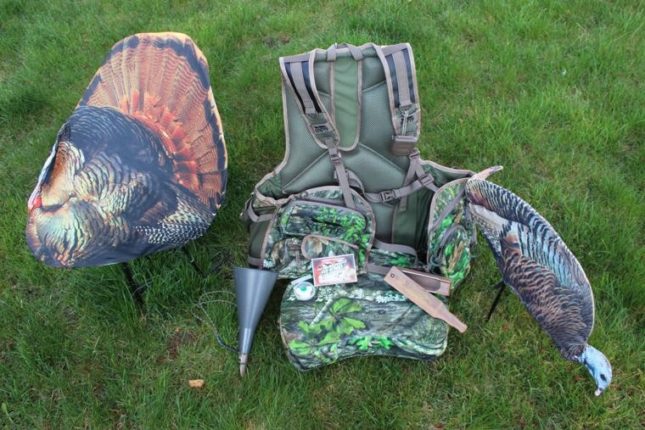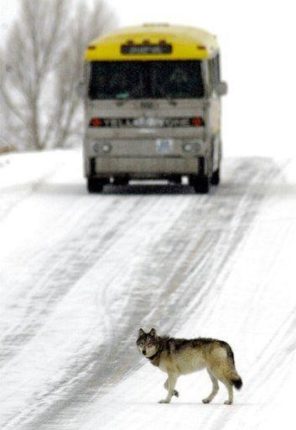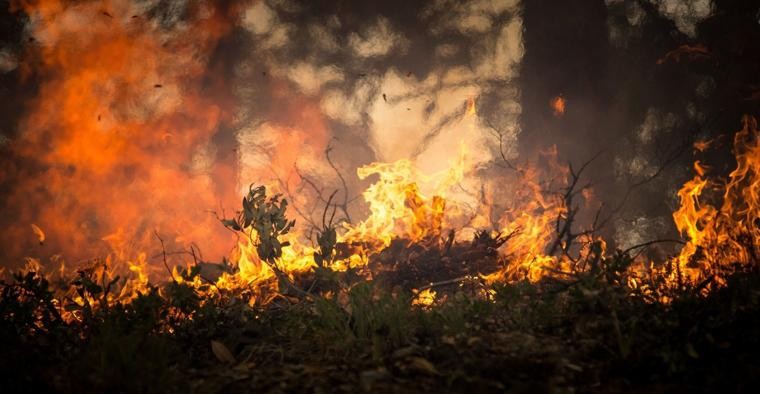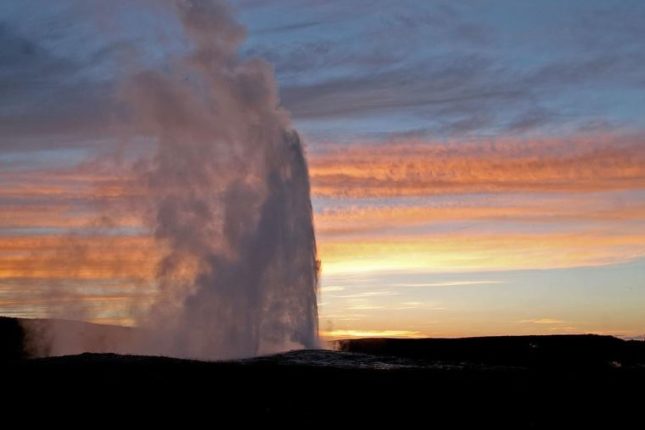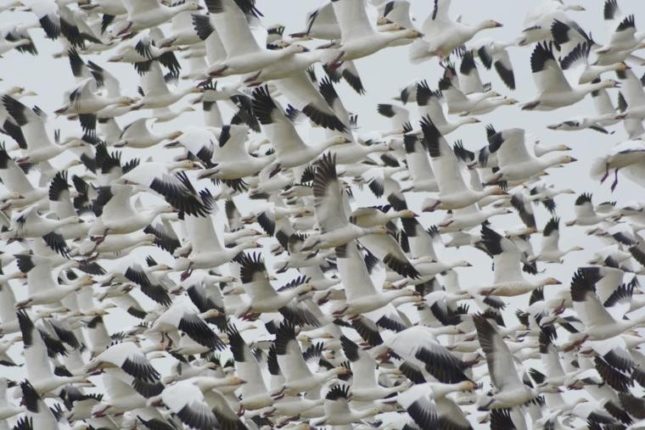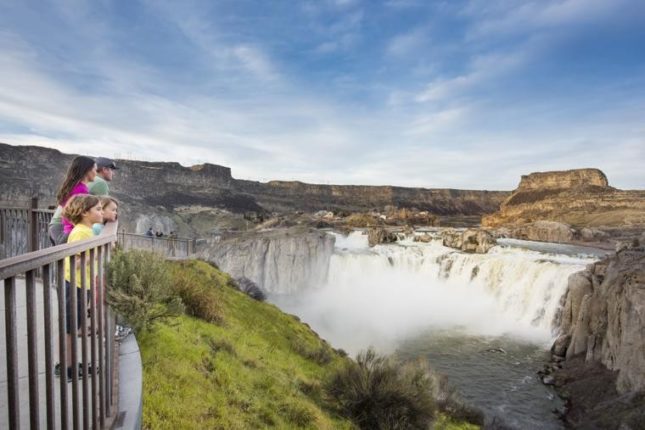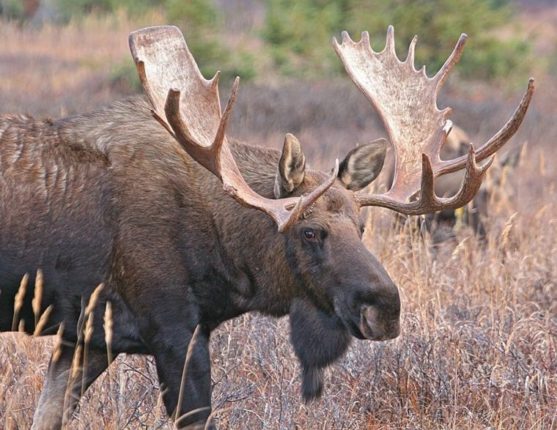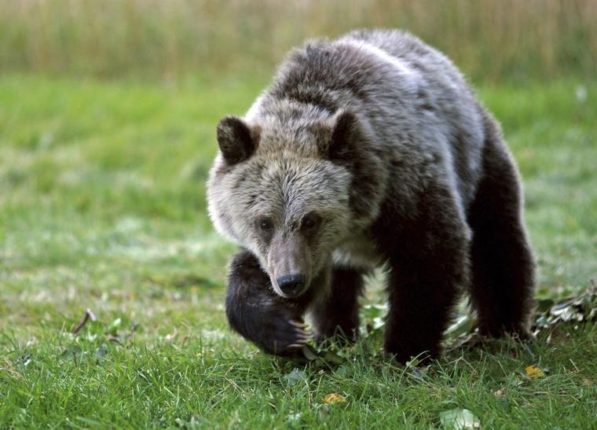Last article we talked about the importance of sighting in our shotguns. This week let’s talk about what gear you’ll need to increase your chances of killing a turkey.
You don’t need every little $100 gizmo out there, but there are some items that will increase your chances of succeeding. Here are a few that I like, including some new ones for 2018.
Decoys: I use Montana Decoys because they’re lightweight. After a set-up, it’s easy to throw them in my backpack and take off to the next spot. They’re two-dimensional so I always use at least two and have them turned different ways, so no matter which direction they come in from, they’ll see them. This year they came out with the Miss Purr-fect 3D Hen decoy.
Backpack: You may think it’s strange that I list a backpack as a necessary item but hear me out. When turkey hunting, you’ll be carrying decoys, calls, shells and water. You need a pack. I love the Alps Mountaineering NTWF Grand Slam pack. To list all of the features would be a whole product review in and of itself. It doesn’t just have shoulder straps, but it also has a front like a hunting vest with numerous pockets for all manner of calls, a compartment to carry your decoys and a foam pad to sit on. The pack has legs so you can flip it around and set on the pad and have a back to lean against. If you’re sitting on rocks and not comfortable when calling, you’re going to be fidgeting around, and as we all know, turkeys have impeccable eyesight and will bust you in a hot second.
Calls: I use Quaker Boy calls. OK, I’m old school. I still like a wood box. I use their Hurricane box call but they also make slate plates, reeds and push boxes. I like their reeds and use them for turkeys as well as varmints, elk and everything else.
Shotgun: Turkeys are tough so you’ll want a shotgun with a 3-inch chamber. I had to have a 3 1/2-inch but Hevi Shot shells kick so bad I just shoot 3-inch. Sorry, I’m a lightweight. I like semi-autos but a lot of people favor pumps. Nothing magical. Use whatever flavor you’re comfortable with.
Scopes/sights: For shooting long distances, you need a better sight system than just a single bead. I don’t use scopes or sights but a lot of people do and some day I’m sure I’ll make the change.
Shells: There are a lot of turkey loads available but Hevi Shot owns the market. You may balk at the price but remember, it’ll only take one shot. And while on shooting, I like to use Birchwood Casey targets to sight in my shotgun. I love their splattering targets. They’re a great visual.
Camo: All the manufacturers want me to adamantly declare that you have to wear their perfectly matched camo to be successful, but I wear a mismatch assortment of clothing. I wear Army wool gloves, a cheap ghillie top and face mask, and none of it matches. Nothing in the woods matches, does it? There’s a splash of green pine limbs, a splash of brilliantly colored brush leaves, green grass, grayish sagebrush with lime-colored leaves and so the assortment of colors goes. So don’t feel like you have to have an all-matching $300 set.
Boots: I am going to be hiking hard so I want some good boots. For this year, I just got a pair of Irish Setter Drifter hiking boots. I’m ready to burn up the mountains.
Knives: Almost any knife will do if you’re going to clean your turkey and smoke it. But to bone out the breast for jerky, check out the Bear & Son Cutlery Stag Delrin Ergonomic Caper. With its small blade you can efficiently remove the breast and cut off the legs to smoke.
Cooking your bird: I love to smoke my wild turkeys but I also like making turkey jerky. Check out the Hi-Mountain jerky seasonings. I like their Hickory Blend, Hunter’s Choice or Cracked Pepper packages.
Safety: I’m not sure I understand why, but it seems like there are more shooting accidents in the turkey hunting world than all other seasons combined. I’ve had three buddies tell me of someone they knew that shot someone or has been shot. That’d devastate you. Check out the SafeShoot system.
Tom Claycomb lives in Idaho and has outdoors columns in newspapers in Alaska, Idaho, Utah, Nevada, Colorado and Louisiana. He also writes for various outdoors magazines and teaches outdoors seminars at stores like Cabela’s, Sportsman’s Warehouse and Bass Pro Shop.
